Birds
The water and the many trees in Lelystad Nature Park attract all kinds of birds. Cormorants, kingfishers, and ospreys dive for fish here, and flocks of ducks and geese often bob about on the water. High in the trees, you can spot the rare golden oriole and roosting cormorants. Storks regularly nest on the nesting poles.
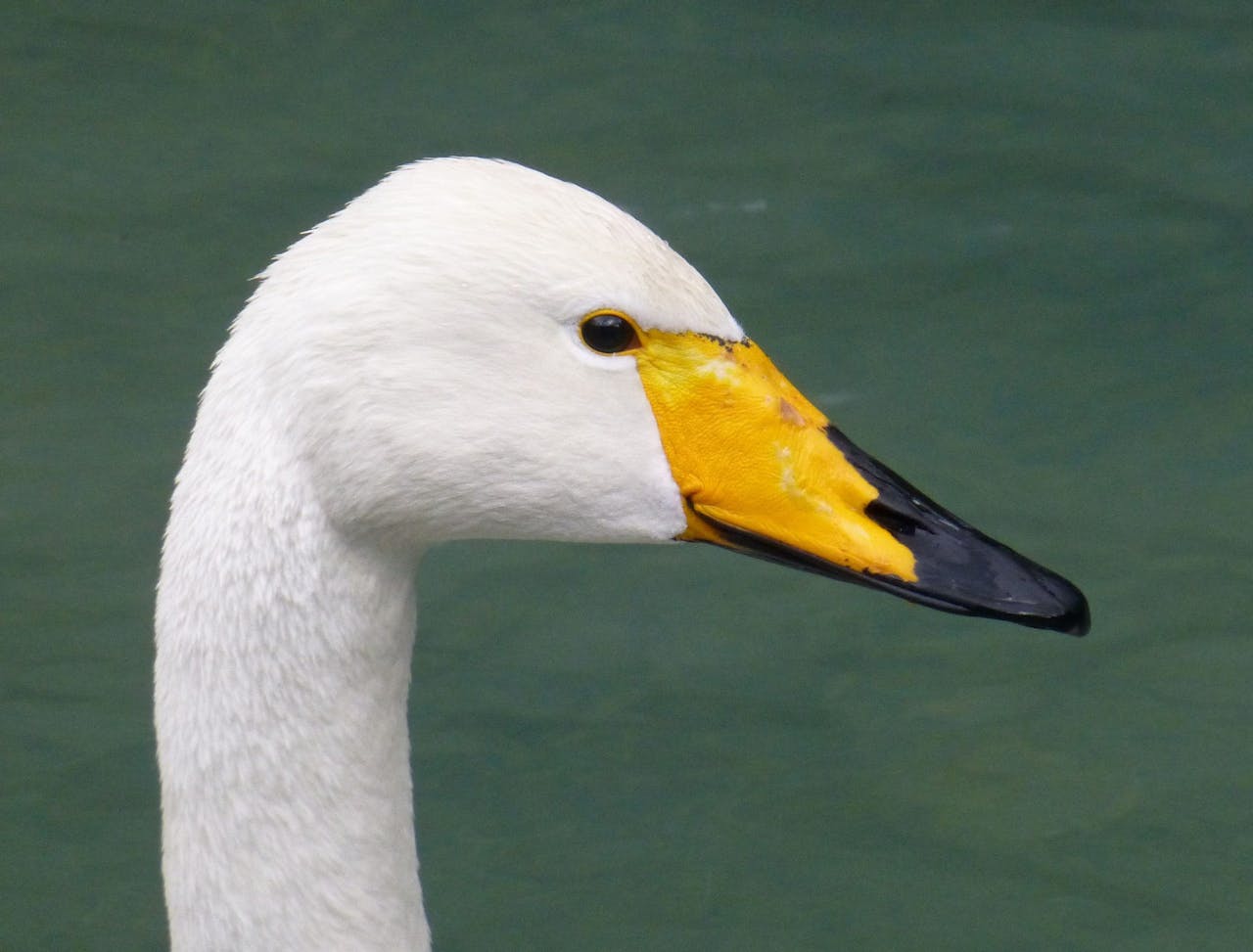
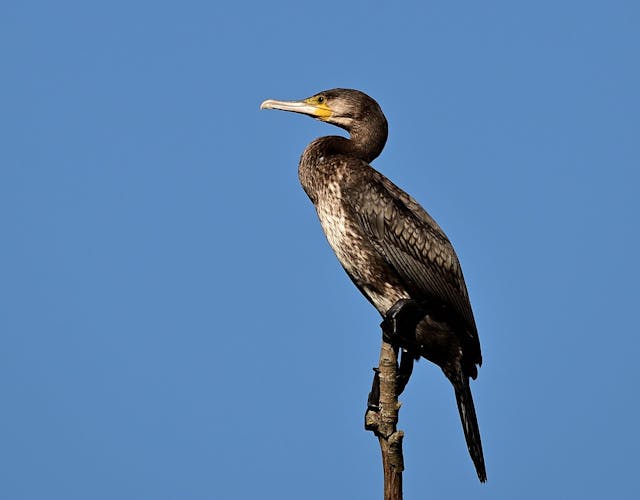
Cormorant
Cormorants appear black at first glance, but their plumage is dark green. They are at their most beautiful at the beginning of the breeding season. Their cheeks and thighs turn white, and the skin around the bill turns yellow to orange-red. Their hooked bill and webbed feet are useful for catching fish. These divers can stay underwater for over a minute. Cormorants primarily eat whitefish.
Roosting in trees
Cormorants often roost in the trees on the opposite side of this pond. The trees are white with droppings.
Did you know?
Cormorants don’t have a water-repellent layer of oil on their feathers like other birds. After diving, they need to let their feathers dry, which is easier with their wings spread.
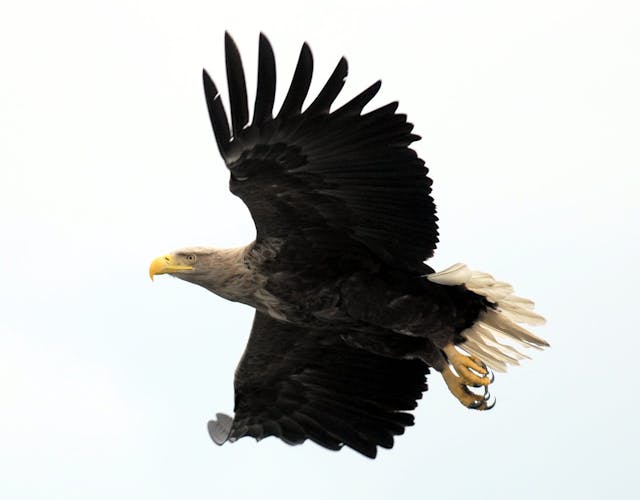
White tailed eagle
The impressive white tailed eagle, with its broad wings and yellow hooked beak, hunts fish and waterfowl, which it grabs from the water with its sharp talons.0
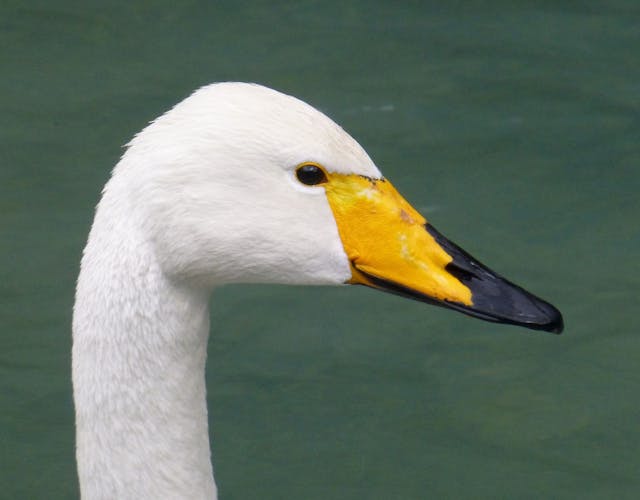
Whooper Swan
This graceful, white swan is immediately recognizable by its yellow and black beak.
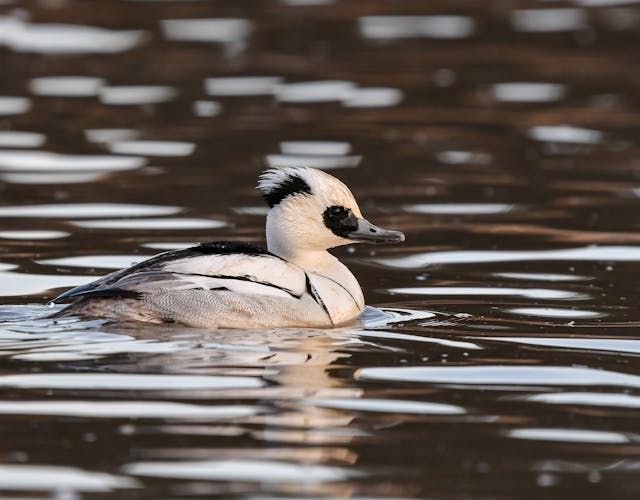
Smew
The male smew is black and white, the female is brownish. They have small teeth on their beaks, which they use to catch fish.
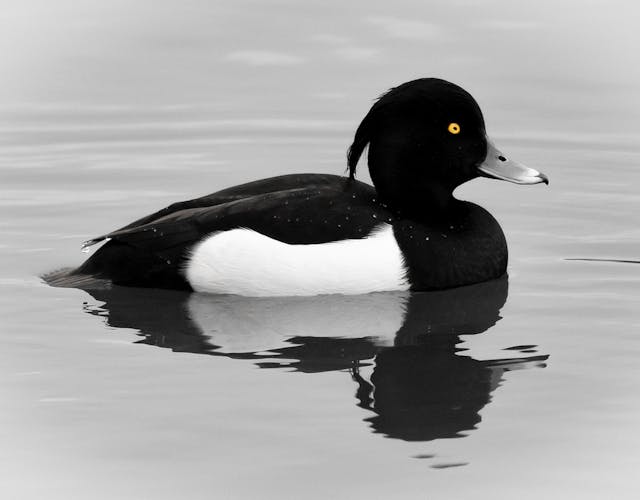
Tufted Duck
They get their name from the tuft on the back of their heads. The male is black and white and has yellow eyes.
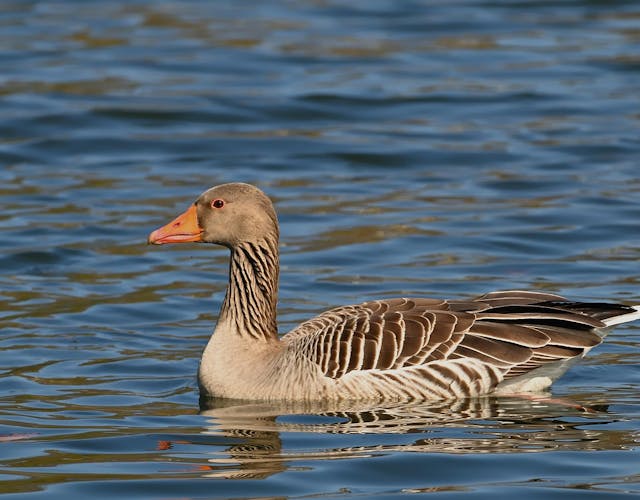
Greylag Goose
The legs and beak of this goose are orange. Families often swim in a train, with the young in the middle.
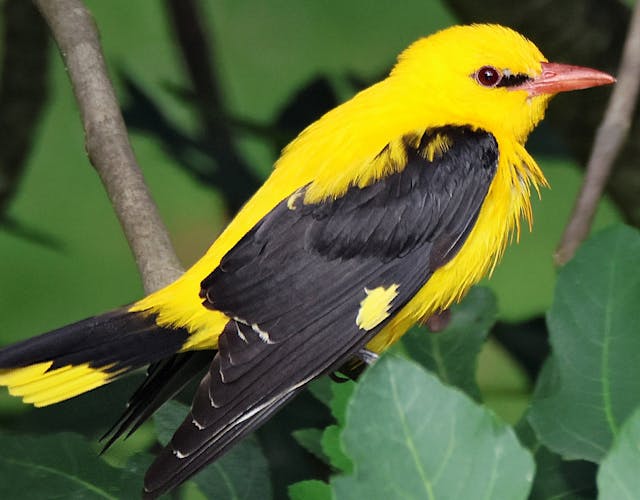
Oriole
The striking yellow and black oriole usually hides high in the trees. With a bit of luck, you’ll hear its familiar song.
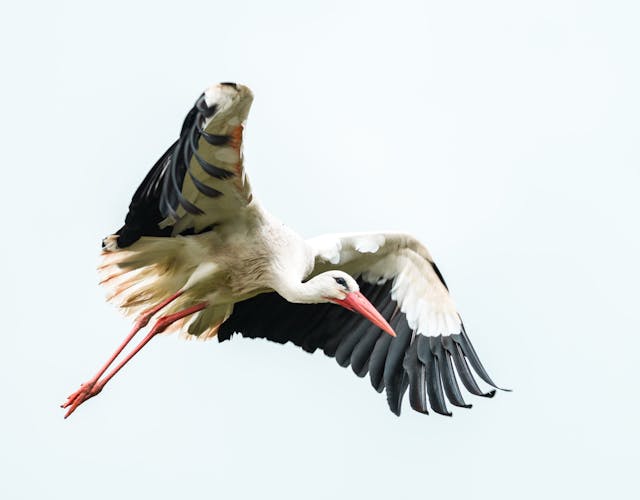
White Stork
In the air, you can recognize the white stork by its outstretched neck. They eat small mammals, birds, amphibians, reptiles, and insects.
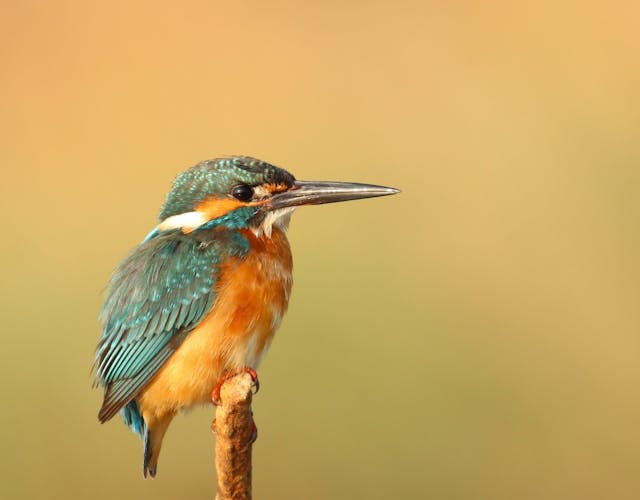
Kingfisher
This bright blue fish hunter with an orange breast is often heard before you see it, thanks to its shrill call.
